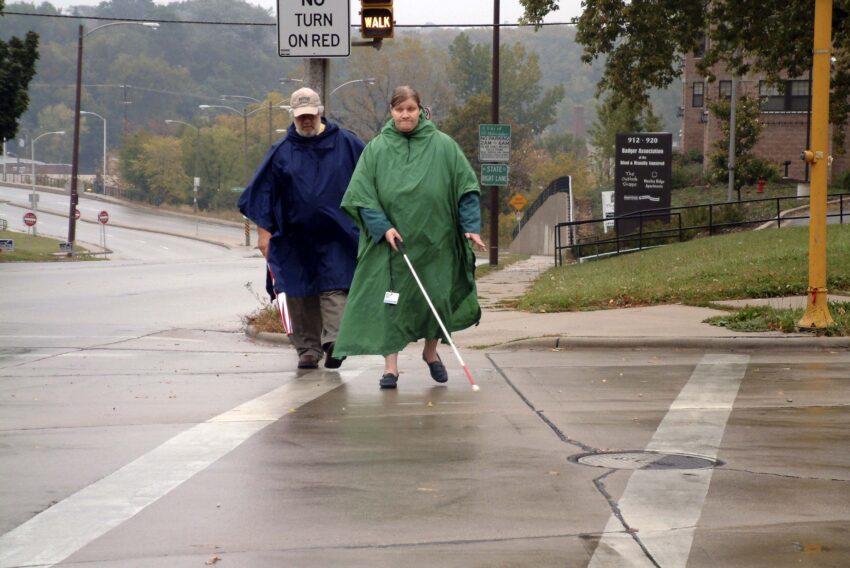Safe Winter Travel Tips

Posted In Categories: Living with Vision Loss
During winter months, pedestrians with visual impairments are affected by increased difficulty in keeping a line of direction on sidewalks, establishing and maintaining orientation, and especially negotiating street crossings safely.
These 10 easy and practical tips can make winter travel easier and safer for everyone:
- Tell someone when you’re leaving, where you’re going and when you plan to return.
- Know the forecasted weather conditions for your entire trip. Stay up to date by listening to the radio, TV, or going online.
- Carry a cell phone with a charged battery in case of emergencies.
- Always consider the wind chill factor when planning to travel during the colder months and dress appropriately. The cold can be distracting when using orientation and mobility skills, so it is important to dress in layers with wind barriers.
- Winter days are short. Wear reflective safety clothing so you’ll be seen when it gets dark out.
- Don’t wear hats that cover your ears because they can reduce auditory information.
- Use a mobility mitten instead of gloves to improve tactile information your white cane provides.
- Protect your feet from the cold by wearing water resistant shoes or boots with good, but not overly thick, tread.
- Always have a back up plan – Consider taking a bus rather than walking if frigid temperatures prevail.
- Cabs, Uber or Lyft make good alternatives to successfully travel in the winter when sidewalks or bus stops are not accessible.